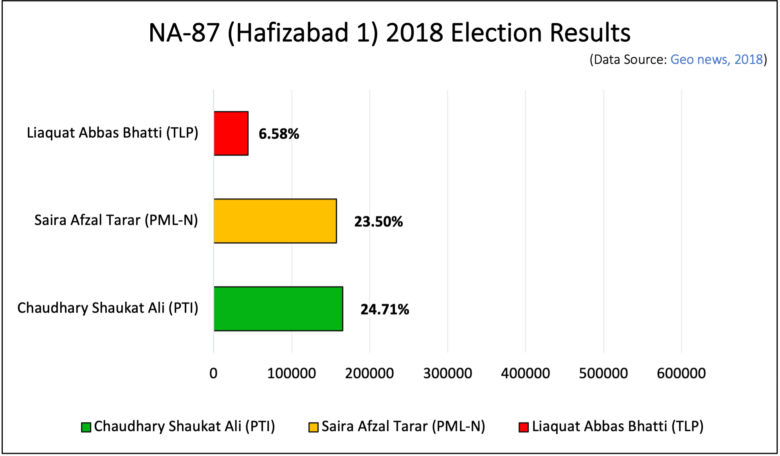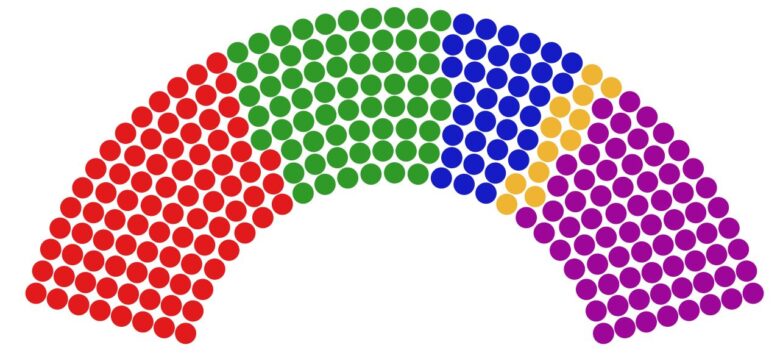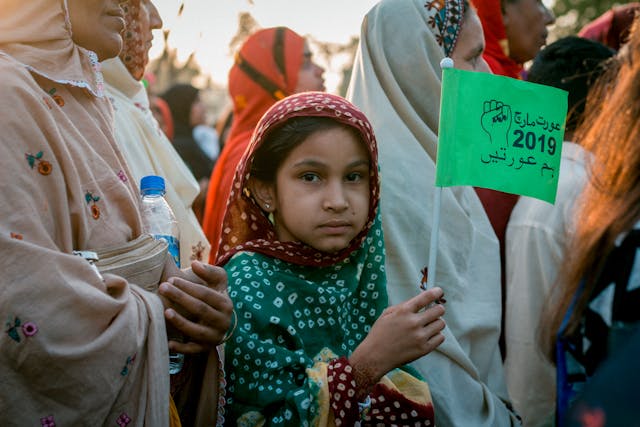“The problem is in the system, not democracy,” says Dr. Adnan Rasool, a political scientist from Georgia State University. The electoral system plays a paramount role in the prospering of a democratic country. Hence, the actuality of an appropriate and unbiased electoral system is imperative.
The term electoral system or voting system symbolizes the set of laws by which the citizens’ votes are transformed into the number of seats won by any political party or an individual. It refers to the procedure that determines the conduction of the elections and referendums and how their outcomes are determined.
Taxonomy of Electoral Systems
Presently, the electoral systems adopted in representative democracies are classified into three major categories: majoritarian or plurality system (single-winner system), proportional (multi-winner system), and a hybrid system (mixed system).
Plurality or majoritarian system is based on two primary rules. First, every person can cast a single vote. Second, the aspirant with the highest number of votes is declared the winner. The five most common types of this system are First-Past-The-Post (FPTP), Block Vote (BV), Alternative Vote (AV), Two Round System (TRS), and Party Block Vote (PBV).
The system does not obligate the candidate to gain an outright majority to be elected. It divides the country into constituencies. Citizens vote for candidates, who stand for their respective constituencies, instead of the political parties. The system is employed in the United States, United Kingdom, Australia, Canada, Pakistan, India, and several other countries in the British commonwealth.
Proportional representation system, on the other hand, endeavors to establish a representative body that exhibits the overall distribution of public support for every political party. The two most prevalent types of this system are Single Transferable Voting (STV) and Party List Proportional Representation (List PR).
In the proportional electoral system, citizens vote for political parties rather than individual candidates. The system obligates the political parties to attain a precise percentage of votes to establish their government. If all of the political parties fail to do so, re-elections are carried, which permits citizens to vote recalling the outcomes of the prior attempt.
Such a system treats the entire country as one single constituency rather than dividing it into multiple. It is employed in several countries throughout the world, such as Finland, Denmark, Italy, Norway, Spain, Russia, Luxembourg, Brazil, Israel, etc.
Electoral System in Pakistan
The Islamic Republic of Pakistan is a federal parliamentary democratic republic. It has 342 seats in its Parliament, also known as the National Assembly, out of which 60 seats are reserved for women and 10 for minorities. It consists of a prime minister who is the head of the government and a cabinet. The prime minister is elected through a majority of the members of the National Assembly.
The electoral constituencies include the national assembly whose members are directly elected, and the senate whose members are selected by the elected provincial legislators. The executive branch of government is dependent on the legislative branch for its construction and survival. The president of Pakistan is selected through a secret ballot within the national assembly and the senate, as well as members from the four provincial assemblies. The duration of the presidency in Pakistan is five years and limited to two terms.
Ever since its self-determination from British colonialism, Pakistan employs the rubric of plurality system labeled as the First-Past-The-Post electoral system (FPTP) – also designated as Simple Majority Voting or Winner Takes All for its general legislative elections. Pakistan has an aggregate of 272 constituencies and 750 sub constituencies. The voters cast a vote for their preferred candidate, and the candidate with the most amount of gained ballots is hailed as a winner.
This may look fair, decisive and logical – but the system is not without criticism. One of the major critiques of this electoral system is that it is highly unrepresentative. This system declares the representative with the highest number of votes as a winner of elections and overlooks the winning margin of the elected candidates. Hence, there are significant chances of one getting elected with minor public support. People voting for the losing candidates are left without the representative of their choice.
For instance, during the 2018 legislative election, in NA-87 (Hafizabad 1) nearly 394,853 from a total of 670,114 registered voters (approximately 58%) cast their votes. Chaudhry Shaukat Ali (PTI) was able to triumph in the election in this constituency by obtaining less than a quarter of registered votes (approximately 24.71%) or less than half of the actual votes cast (about 41.97%). Moreover, the disparity between Shaukat Ali’s (PTI) and Saira Talal’s (PML-N) votes is almost nonexistent as there is only a discrepancy of about 8,165 votes (about 1.21%). Still, Shaukat Ali got to represent the entire constituency in the National Assembly.
In such a system, the minority rules. Moreover, people voting for the not-so-mainstream candidates cause the top candidate to win with even less majority.

Compare this to the Proportional Representation System, where the political party must obtain a precise percentage of total votes to form their parliamentary government – which ensures that the winning candidate has a significant majority. Another frailty of the FPTP system is that the actual number of votes cast for a party is not reflected in the number of parliamentary seats it acquires.
In the National Assembly general elections 2018, Pakistan Tehreek-e-Insaaf secured around 17 million of 53 million votes cast (roughly 32%) throughout the country. But it won 116 out of 272 seats (approximately 43%) in the National Assembly. The dissimilitude becomes even more conspicuous if we scrutinize the results of provincial elections. Meanwhile, proportional representation would considerably abate the discrepancy among the party’s share of the vote and parliamentary seats.
Comparing FPTP and PR Electoral System: Exemplification of General Elections 2018
The figures below illustrate the political party’s share of seats in the National Assembly with both First-Past-The-Post Electoral System and Proportional Representation Electoral System (prediction based on the provisional performance of each party).



In proportional representation system, the political parties receive the same percentage of seats in the parliament as the percentage of votes they have obtained. Meanwhile, in the 2018 general elections, Pakistan Tehreek-e-Insaaf got about 32% of the actual votes cast and secured nearly 43% of the seats in the National Assembly. The Pakistan People’s Party’s Parliamentarians (PPPP) obtained nearly 13% of the total vote cast and represented about 16% in the National Assembly.
Moreover, we can observe that the proportional representation system gives voice to the small political parties. The PR system has increased the percentage of seats for small political parties and independent candidates from nearly 13% to 26%. (Statistics collected from Election Commission of Pakistan) (Calculation given below citation)
The FPTP electoral system emboldens tactical voting. Tactical voting can be described as when any voter chooses to support a candidate or political party, which they would not usually back in order to obviate another candidate or political party from winning. Tactical voting massively declines in the proportional electoral system. Since there is more than one winner in every area, unless one person chooses to cast a vote in support of any small fringe party, there is a significant chance that you will get someone to represent you.
Another shortcoming of the FPTP electoral system is that it is perceived as wasteful because the votes obtained by the losing candidates and for the winning candidate above the winning level do not count for anything. Unlike FPTP, the proportional representation system does not suppress the voters’ voice as fewer votes are squandered, with the ranked voting system preferences of more people are taken into account. The FPTP system sorely restricts the choice of voters as political parties are not analogous and do not articulate with one consolidated voice. The parties are more likely to be confederacies of various perspectives.
For instance, the voter in a specific area does not agree with the candidates’ viewpoints of the preferred political party. There is no way that he can manifest that at the ballot box. In the FPTP system, where citizens vote for the candidates rather than the political parties, there might be several factors other than the candidate’s political agenda, which might benefit him in procuring votes. Such as caste, ethnicity, region, and religion of the candidate.
The FPTP electoral system divides the country into small constituencies. The way those perimeters are delineated has a significant effect on the outcomes of the election. Moreover, these constituencies lead to the proliferation of safe seats. This not only effectually disenfranchises the voters of a particular region, but also leads to these constituencies being overlooked when it comes to framing policy.
Also, this emboldens attempts at gerrymandering. For instance, NA-128 is one of the smallest constituencies of Punjab with around 345,763 registered voters. PML-N is consecutively dominating the area for the past three elections by obtaining less than 35 percent of registered votes every election. The proportional representation systems mostly negotiate the entire country as one single constituency, which wholly eliminates this drawback.
Conclusion: A Roadmap to Democracy
Elections take into consideration a three-fold role of provision of legitimacy to the government, allow for the democratic process and provide citizens the avenue of participation in that process. Despite the use of FPTP system for general elections, Pakistan follows the Single Transferable Voting (STV), a type of proportional representation system for the reserved seats of the National Assembly (60 for women and 10 for minorities) and the Senate elections.
The critiques on the other side argue that the FPTP system forms very stable legislative governments and is easy to understand. Unlike the PR system, the governments formed by FPTP system have a mandate to carry out clear-cut policies on the groundwork of their support in the Parliament. However, since the voice of many voters is left out, they are left unrepresented. Also, the PR will incredibly increase voter turnout.
To be legitimate, democracy should be inclusive, and this should not be sacrificed in exchange for ‘stability and ‘simplicity. Pakistan should adopt the proportional representation system for all the seats in the National Assembly, not just reserved ones.
If not, Pakistan should consider having the Two Round System (TRS), a type of Plurality system also termed as the run-off or double-ballot electoral system. The first round is conducted similarly as the normal First-Past-The-Post system (FPTP). If any of the candidates wins an outright majority of the votes, they get elected without the necessitation of a second round. Otherwise, a second ballot is conducted, and the winner of the second round is declared elected. This system enables the citizens who voted for any of the losing candidates to reconsider their evaluation and choose between two of the top candidates, whom they best want to represent them.
“There should be a reflection of ‘one man, one vote’ which is not present in the First-Past-The-Post (system), where votes are lost. Every person’s vote should have value.” said Dr. Arif Alvi, the President of Pakistan.






